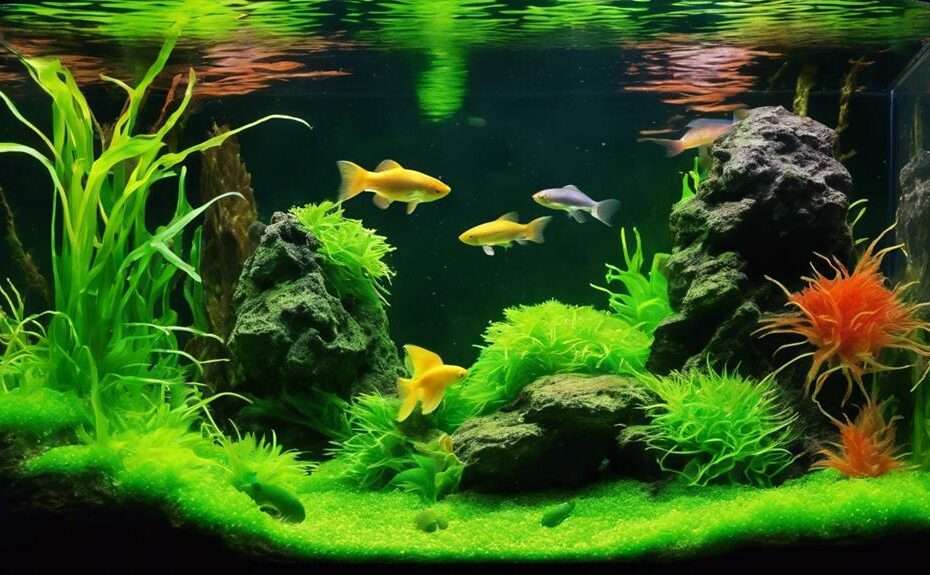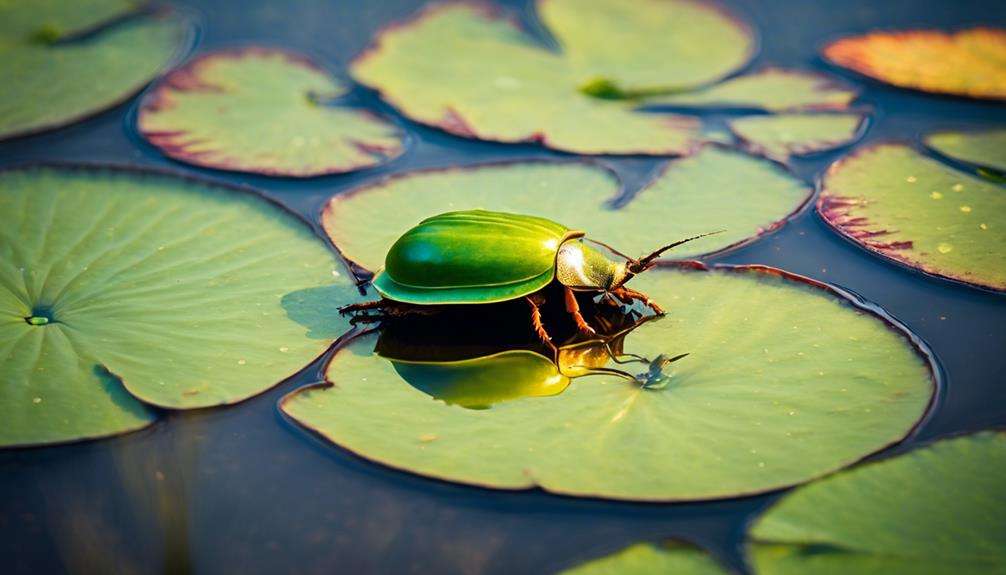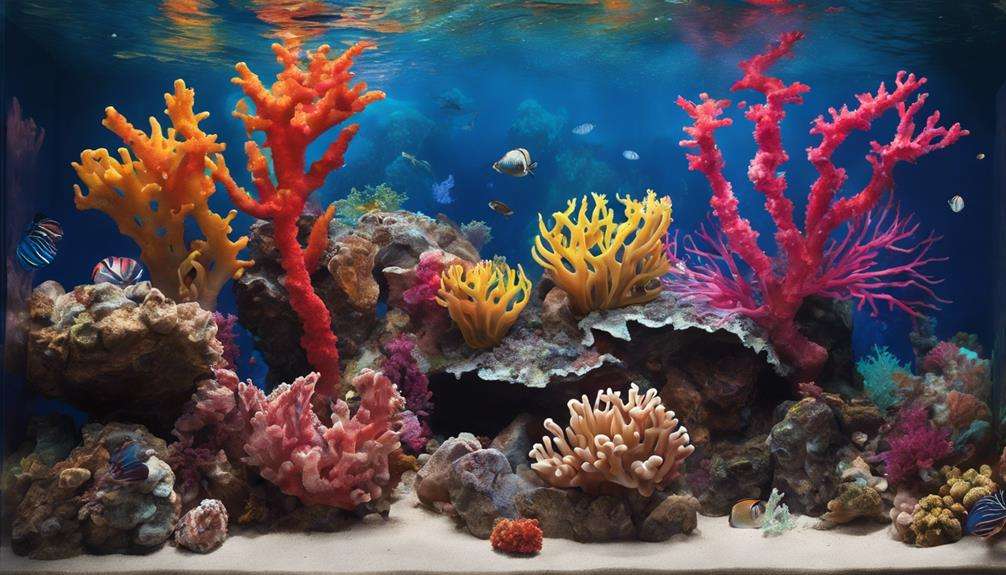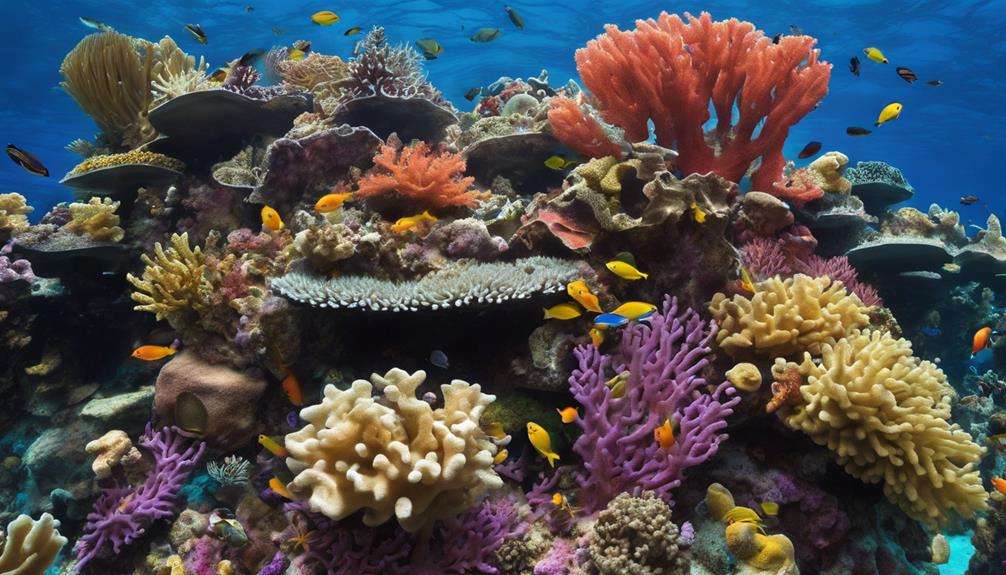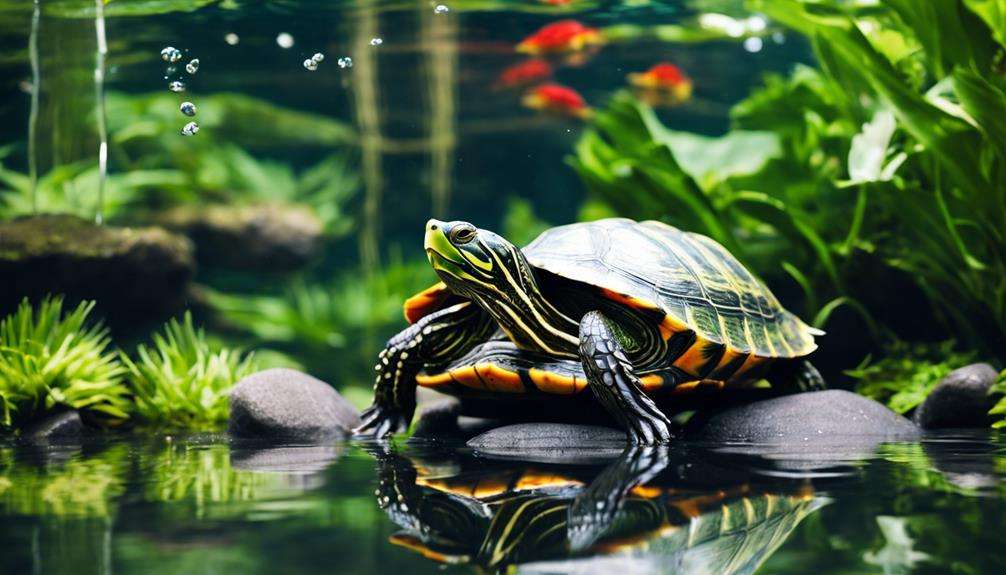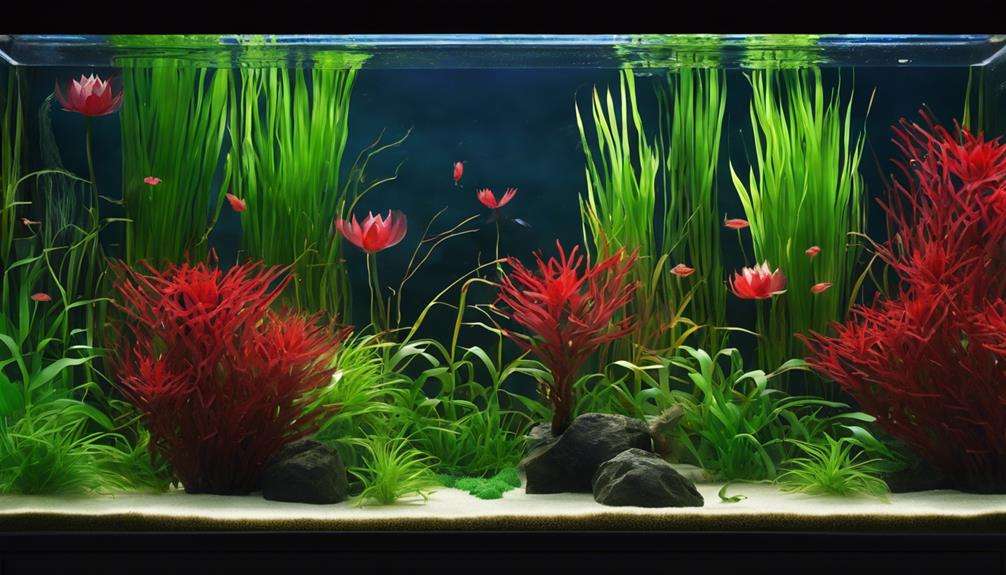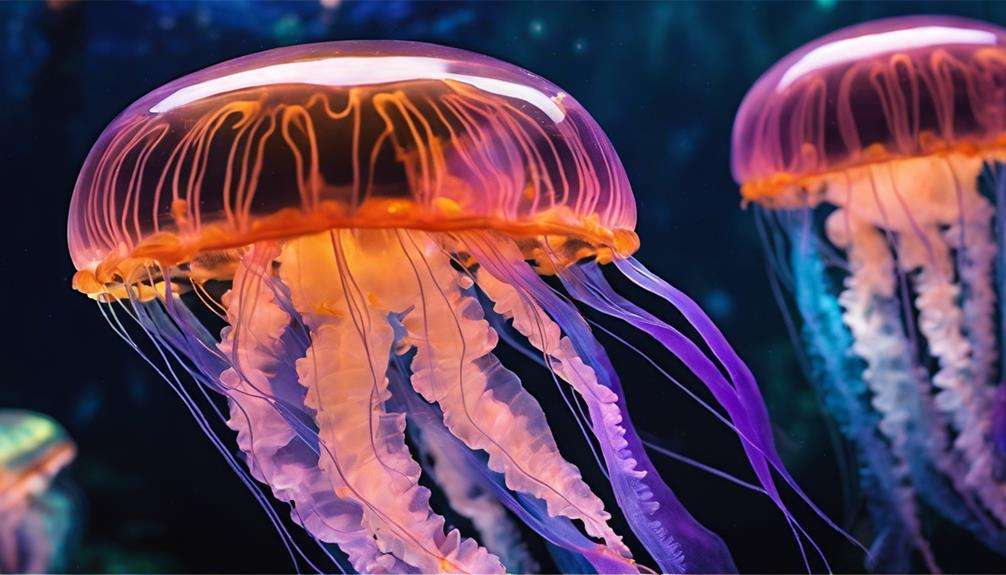If you're looking to maintain an immaculate fish tank without spending hours scrubbing algae, consider introducing some fascinating algae eaters into your aquatic ecosystem. These specialized creatures not only help keep your tank clean but also bring a unique element to your underwater world.
From lesser-known species with intriguing habits to exotic algae eaters that add a touch of the extraordinary, exploring the diverse options available can lead to an enchanting and harmonious aquarium environment.
Key Takeaways
- Unique algae-eating fish like Twig Catfish and Clown Plecos offer diverse options for tank cleaners.
- Exotic algae eaters such as Hillstream Loaches bring color and vibrancy to aquariums while maintaining cleanliness.
- Colorful tank cleaners like Mollies and Florida Flag Fish provide efficient algae control with unique characteristics.
- Uncommon selections like Rabbit Snails and specific care requirements of algae eaters add interest and diversity to tanks.
Unique Algae-Eating Fish Species
When considering unique algae-eating fish species for your aquarium, it's essential to select those that suit your tank size, water parameters, and algae types to guarantee their best care and maintenance.
Twig Catfish, also known as Rineloricaria lanceolate, make excellent algae eaters for your tank. Growing up to 4 inches, these docile fish thrive when kept in groups.
Clown Plecos, scientifically named Panaqolus maccus, are another great option, reaching about 3 inches in size. They feed on soft algae but prefer solitary living due to their territorial behavior.
Mollies, or Poecilia sphenops, are larger algae eaters, growing between 4 to 6 inches. These fish enjoy picking at filamentous algae and do well in hard water conditions with a GH of 60-180 ppm.
Hillstream Loaches, such as Sewellia lineolata, have a unique walking motion and a suckermouth ideal for algae consumption.
Exotic Algae Eaters for Tanks
If you're looking to add a touch of color to your aquarium while keeping algae at bay, consider unique algae-eating species like the Twig Catfish, Hillstream Loach, and Clown Pleco.
These exotic tank cleaners not only help maintain a clean environment but also bring a vibrant and distinctive appearance to your setup.
Their specific care requirements and algae-eating habits make them fascinating additions for hobbyists seeking a diverse and visually appealing aquatic community.
Unique Algae-Eating Species
Among the unique algae-eating species suitable for fish tanks, the Twig Catfish (Rineloricaria lanceolate) stands out as a docile and group-oriented option that can grow up to 4 inches in size. These catfish are excellent algae consumers and prefer to be kept in groups of three or more.
Rabbit Snails (Tylomelania app.) are also intriguing algae eaters, growing up to 5 inches and burrowing through substrate while avoiding live aquarium plants.
Hillstream Loach (Sewellia lineolata) have a distinctive appearance and cling to surfaces with their suckermouth, making them effective algae eaters in a 20-gallon tank.
Clown Plecos (Panaqolus maccus) are territorial algae eaters that reach around 3 inches and are best kept alone due to their shy nature.
Additionally, Mollies (Poecilia sphenops) are livebearers that grow 4 to 6 inches and help control algae in a 40-gallon tank by thriving in hard water environments with a GH of 60-180 ppm.
Colorful Tank Cleaners
With a focus on colorful tank cleaners, the next set of exotic algae eaters for tanks brings vibrant diversity to your aquatic environment.
The Twig Catfish is a docile algae eater that grows up to 4 inches and thrives in groups of three or more.
Clown Plecos are territorial algae eaters, reaching about 3 inches in size, and prefer solitary tank life.
Mollies, as livebearers, pick at filamentous algae and require hard water with a GH of 60-180 ppm to flourish.
Florida Flag Fish, resembling the US flag, consume hair/thread algae and appreciate dense plant cover in their tank.
Hillstream Loaches exhibit a unique walking motion and cling to surfaces with a suckermouth, making them excellent algae eaters for freshwater tanks.
Uncommon Algae Eater Selection
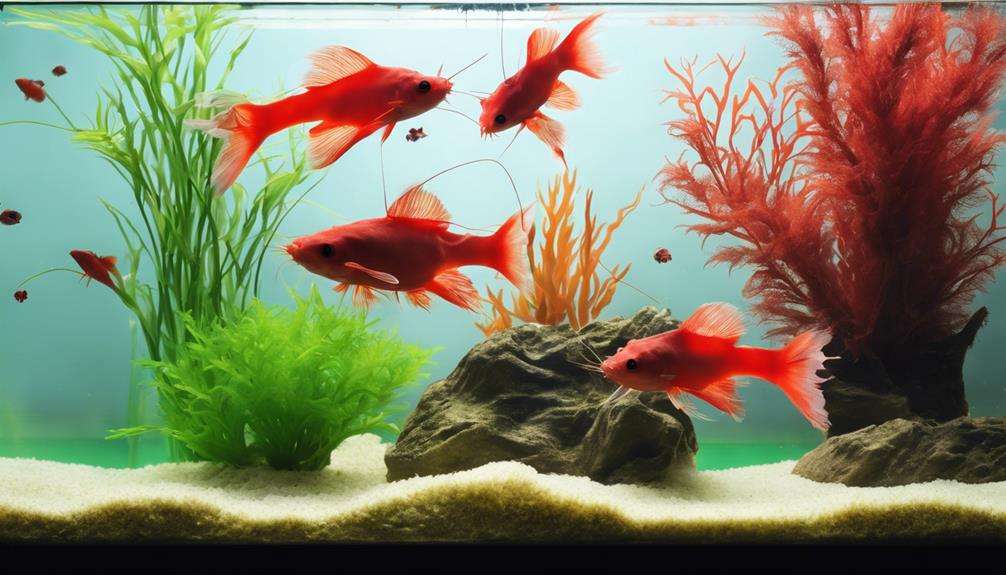
When considering uncommon algae eaters for your fish tank, you might come across species like the Twig Catfish, Mollies, Florida Flag Fish, Hillstream Loach, and Rabbit Snail. These unique creatures offer a different approach to algae control and tank maintenance, each with its specific care requirements and behaviors.
Exploring these rare algae eaters can add diversity and interest to your aquarium while efficiently managing algae growth.
Rare Algae Eater Species
Rare algae eater species present unique options for maintaining a balanced ecosystem in your fish tank, offering both functionality and visual interest. The Twig Catfish requires specialized care, growing up to 4 inches and needing plenty of hiding spots.
Rabbit Snails, reaching 5 inches, thrive in cooler water temperatures between 68°F and 74°F. Clown Plecos, territorial with other plecos, prefer to be kept alone and grow to about 3 inches.
The Hillstream Loach is a fascinating algae eater with a suckermouth for clinging to surfaces and a distinctive walking motion. Finally, the Florida Flag Fish, resembling the US flag, enjoys eating hair/thread algae and flourishes in tanks with dense plant cover.
These rare algae eaters add uniqueness but may have specific care requirements to keep them healthy.
Exotic Tank Cleaners
Examine these lesser-known algae eaters for your fish tank to enhance its biodiversity and maintain a pristine aquatic environment.
Freshwater Nerite Snails (Neritina natalensis) are efficient algae consumers, leaving tank surfaces clean.
Otocinclus Catfish (Otocinclus vittatus) are small, peaceful tank cleaners that thrive in groups and consume various types of algae.
Siamese Algae Eaters (Crossocheilus oblongus) are social fish that control algae growth, especially hair algae, in community tanks.
These exotic tank cleaners play a crucial role in managing algae levels, promoting a healthier environment for your fish. Consider adding these unique algae eaters to your aquarium to keep it balanced and visually appealing.
Unusual Algae Grazers
Explore a diverse selection of uncommon algae grazers to enhance the biodiversity and maintenance of your fish tank's ecosystem.
Twig Catfish, known as docile algae eaters, can reach 4 inches and thrive in groups of three or more.
Mollies, growing between 4 to 6 inches, feed on filamentous algae and require hard water with a GH of 60-180 ppm.
Florida Flag Fish, peaceful algae eaters resembling the US flag, flourish in tanks with dense plant cover.
Hillstream Loach, with a unique walking motion and a suckermouth, excel at algae control in tanks.
Rabbit Snails, reaching up to 5 inches, prefer cooler water temperatures and burrow through substrate while consuming algae.
Add these unique algae grazers to maintain a healthy aquatic environment.
Fascinating Fish Tank Algae Eaters
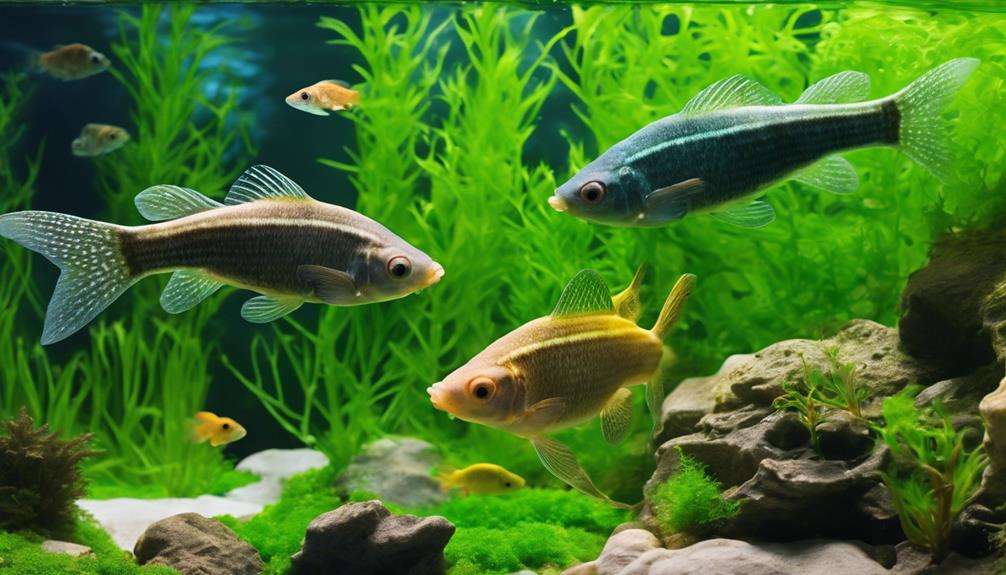
When considering fascinating fish tank algae eaters, it's essential to choose species that effectively control algae growth while harmoniously coexisting with other tank inhabitants.
The Siamese Algae Eater is a top choice for combating various types of algae, including the stubborn black beard algae.
Bristlenose Plecostomus stands out for its algae-eating prowess and ability to consume leftover fish food, making it a valuable addition to peaceful freshwater aquariums.
Otocinclus Catfish, though small in size, are efficient algae eaters that thrive in groups, promoting natural feeding behaviors and keeping the tank in balance.
Chinese Algae Eaters exhibit a distinct torpedo-shaped body and golden hue but can display aggressive behavior as they mature, warranting caution in community tanks.
Nerite Snails are highly effective algae eaters available in a range of colors and patterns, enhancing the visual appeal and overall health of the aquarium environment through their diligent algae-consuming habits.
Rare Algae-Eating Aquatic Pets
Rare Algae-Eating Aquatic Pets introduce a unique dimension to aquarium maintenance by offering specialized algae control options beyond the commonly known species.
Vampire Shrimp, also known as Atya gabonensis, are rare algae eaters distinguished by their unique filtering appendages that they use to sift through the water for food particles.
Twig Catfish, like the Rineloricaria lanceolata, are uncommon algae eaters that require specialized care due to their specific dietary and habitat needs.
Hillstream Loach, such as the Sewellia lineolata, stand out for their fascinating appearance and behavior, thriving in cool, well-oxygenated water.
Rabbit Snails, belonging to the Tylomelania spp., are unusual algae eaters that contribute to tank maintenance by burrowing through substrate and reproducing slowly.
Clown Plecos, such as the Panaqolus maccus, are rare algae eaters that can be shy and territorial, adding a unique dynamic to the aquarium environment.
These rare algae eaters offer aquarists intriguing options for algae control while requiring attention to their specialized care requirements.
Intriguing Algae Eater Options
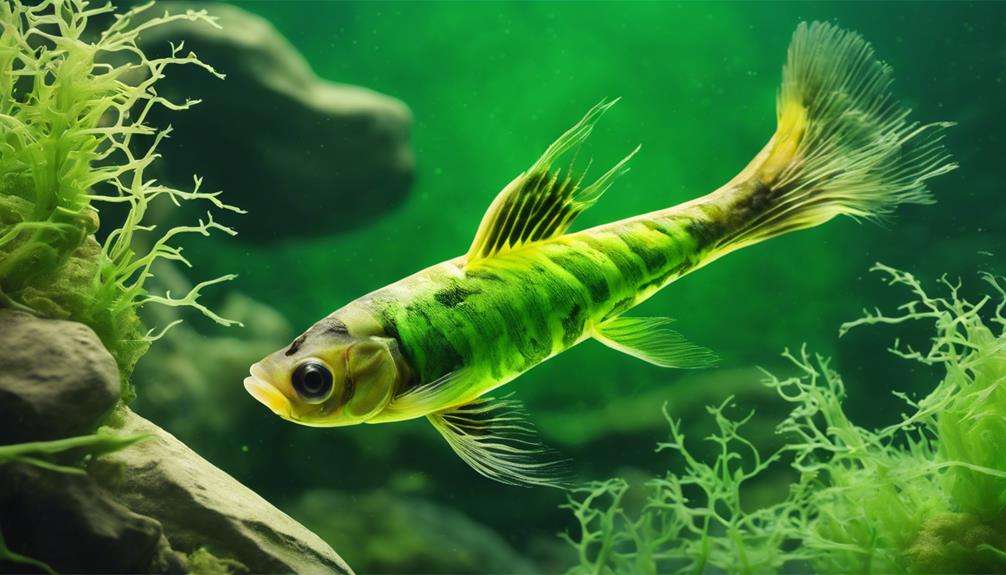
Investigate a variety of intriguing algae eater options to enhance the maintenance of your fish tank.
Otocinclus Catfish, known for their small size but powerful algae-eating capabilities, thrive in groups, promoting natural feeding behaviors within the tank.
Bristlenose Plecostomus, distinguished by its tentacle-like projections, is highly effective at consuming algae and leftover fish food, aiding in tank cleanliness.
Clown Plecos, reaching up to 3 inches in size, are territorial towards other plecos and are best housed alone in a minimum 20-gallon tank.
Twig Catfish, a docile species growing to around 4 inches, feed on various types of algae and necessitate specialized care with ample hiding places for their well-being.
Mollies, ranging from 4 to 6 inches, nibble on filamentous algae and prefer water with a hardness level between 60-180 ppm.
These algae eaters not only provide practical cleaning benefits but also present alluring options for fish tank enthusiasts seeking diverse and engaging aquatic species.
Lesser-Known Tank Algae Consumers
Explore the diverse array of lesser-known tank algae consumers, each offering unique benefits for maintaining a clean and balanced aquatic environment.
Twig Catfish, also known as Rineloricaria lanceolate, are peaceful algae eaters that thrive in groups and can reach sizes of up to 4 inches.
Rabbit Snails, scientifically named Tylomelania, grow up to 5 inches and are substrate burrowers that feed on algae, excluding live plants.
Transparent scavengers like Ghost Shrimp (Palaemonetes sp.) contribute to algae control in community tanks, reaching sizes of about 2 inches.
Hillstream Loach (Sewellia lineolata) showcase a distinctive walking motion, utilizing their suckermouth to cling to surfaces while efficiently consuming algae.
Clown Plecos (Panaqolus maccus), growing to around 3 inches, are territorial algae eaters that prefer habitats with ample plant cover and are best kept alone to prevent conflicts.
Each of these lesser-known algae eaters brings something unique to the table, assisting in maintaining a harmonious and algae-free aquarium environment.
Frequently Asked Questions
What Is the Best Algae Eater for a Fish Tank?
For the best algae eater in your fish tank, consider shrimp varieties, snail species, Pleco behavior, catfish types, invertebrate options, botanical benefits, cichlid compatibility, bottom feeder habits, herbivore preferences, and tank maintenance. Choose wisely for a balanced ecosystem.
What Do Algae Eaters Eat When There Is No Algae?
When algae's scarce, algae eaters turn to alternative diets, like algae wafers and fresh veggies, to meet their nutritional needs. Supplemental feeding with balanced options, including protein sources and algae pellets, guarantees their health. Mimic their feeding habits for best care.
How Do You Starve Algae in an Aquarium?
To starve algae in an aquarium, control lighting duration, manage water quality, maintain balanced nutrients, and regulate fish feeding. By preventing excess nutrients and maintaining ideal conditions, you can effectively manage algae growth and prevent blooms.
What Helps Keep Algae Out of Fish Tank?
To keep algae out of your fish tank, focus on tank maintenance. Control algae growth by maintaining water quality, cleaning regularly, and avoiding overfeeding. Introduce live plants or algae-eating creatures. These steps promote fish health and prevent algae blooms.
Conclusion
Overall, selecting the right algae eater for your fish tank is essential for maintaining a healthy aquatic environment.
For example, one aquarist noticed a significant reduction in algae growth after introducing a Siamese Algae Eater into their tank.
By carefully choosing and caring for algae eaters, you can enjoy a clean and balanced aquarium that benefits both your fish and the overall ecosystem.
Happy fishkeeping!
